
The IMCO CallAir A-9 is a small agricultural aircraft that first flew in 1962, a development of the company's previous successful crop-dusters. It is typical of aircraft of its type - a single-seat aircraft with a low wing incorporating spraying gear.

The Aero Boero AB-95 is a small Argentine civil utility aircraft that first flew on March 12, 1959. It was built by Aero Boero S.A. of Córdoba. The AB-95 is a conventional high-wing monoplane built of fabric-covered metal structure. It has fixed undercarriage.

The Piaggio P.166 is an Italian twin-engine pusher-type utility aircraft developed by Piaggio Aero. The aircraft model name was Portofino, and is also known as Albatross in South African military service.
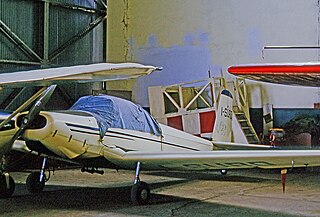
The Aviamilano P.19 Scricciolo was a light civil trainer aircraft built in Italy in the 1960s.
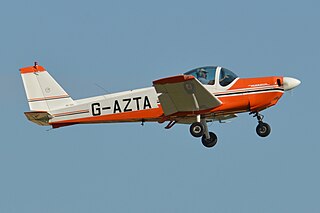
The MBB Bo 209 Monsun is a two-seat light aircraft that was developed in West Germany in the late 1960s.
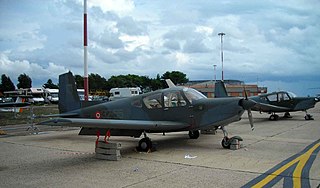
The SIAI-Marchetti S.205 is an Italian four-seat, single-engine, light airplane, manufactured by SIAI-Marchetti. The S.205 made its maiden flight in 1965. The Italian Air Force employs a version called S.208.
The Funk F-23 was an agricultural aircraft produced in the United States during the 1960s. It was designed by Donald Funk using the fuselage frame of military surplus Fairchild PT-19 trainers as a starting point. The resulting aircraft was a low-wing cantilever monoplane with fixed, tailwheel undercarriage and all-metal construction. The main structural changes were in the wing, which had all-new outer panels. The space occupied by the forward cockpit of the PT-19 was used to accommodate a 200 U.S. gallon hopper for chemicals. Production continued until 1970, when manufacturing rights to the design were purchased by Cosmic Aircraft. The new owner, however, produced no further examples of the type.

The DINFIA IA 35 Huanquero was a 1950s Argentine twin-engined general-purpose monoplane aircraft built by the DINFIA.
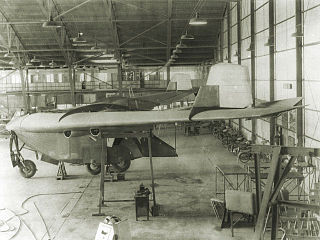
The DINFIA IA 38 was a 1960s Argentine four-engine experimental tailless transport aircraft, designed under the direction of Reimar Horten and based on the German Horten Ho VIII project and built by the DINFIA.

The DINFIA IA 45 Querandi was a 1950s Argentine twin-engined light transport aircraft built by the DINFIA.

The DINFIA IA 53 Mamboretá was an agricultural aircraft developed in Argentina by DINFIA in the 1960s.
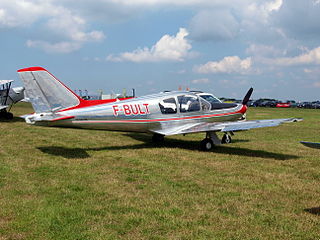
The Procaer F.15 Picchio is an Italian-designed light utility aircraft built by Procaer.

The IAR-827 was an agricultural aircraft built in Romania in the 1970s and 1980s. The penultimate member of the family of designs that began with the IAR-821, it was, like the others, a conventional low-wing monoplane with fixed, tailwheel undercarriage, and shared the all-metal construction of the IAR-826. The prototype flew in 1976, powered by a Lycoming IO-720 engine, but the production examples that followed all had the PZL-3S.

The GY-80 Horizon is a French four-seat touring monoplane of the 1960s designed by Yves Gardan and built under licence, first by Sud Aviation, and later by that company's SOCATA subsidiary.

The Scintex ML 250 Rubis was a French civil utility aircraft of the 1960s.

The Scheibe SF-23 Sperling (en:Sparrow) is a 1950s German two-seat cabin monoplane.

The Aviamilano F.14 Nibbio is a four-seat, single engine cabin monoplane built in Italy in the late 1950s. Only ten production aircraft were completed.

The Turbay T-3A was an Argentine twin-engined seven-seater light transport of the 1960s. A single example was built, but no production followed.

The Jodel DR1050 Excellence and Ambassadeur are part of a family of French built aircraft, designed by Jean Délémontez in collaboration with Pierre Robin, as a development of the Jodel D.10 project. The aircraft was built from 1958 to 1967 both by Centre-Est Aeronautique (CEA) and by Société Aéronautique Normande (SAN) but since the demise of the latter in 1968 has only been supplied as plans.

The Uetz Pelikan is a Swiss four-seat cabin monoplane designed for amateur construction by Walter Uetz.



















